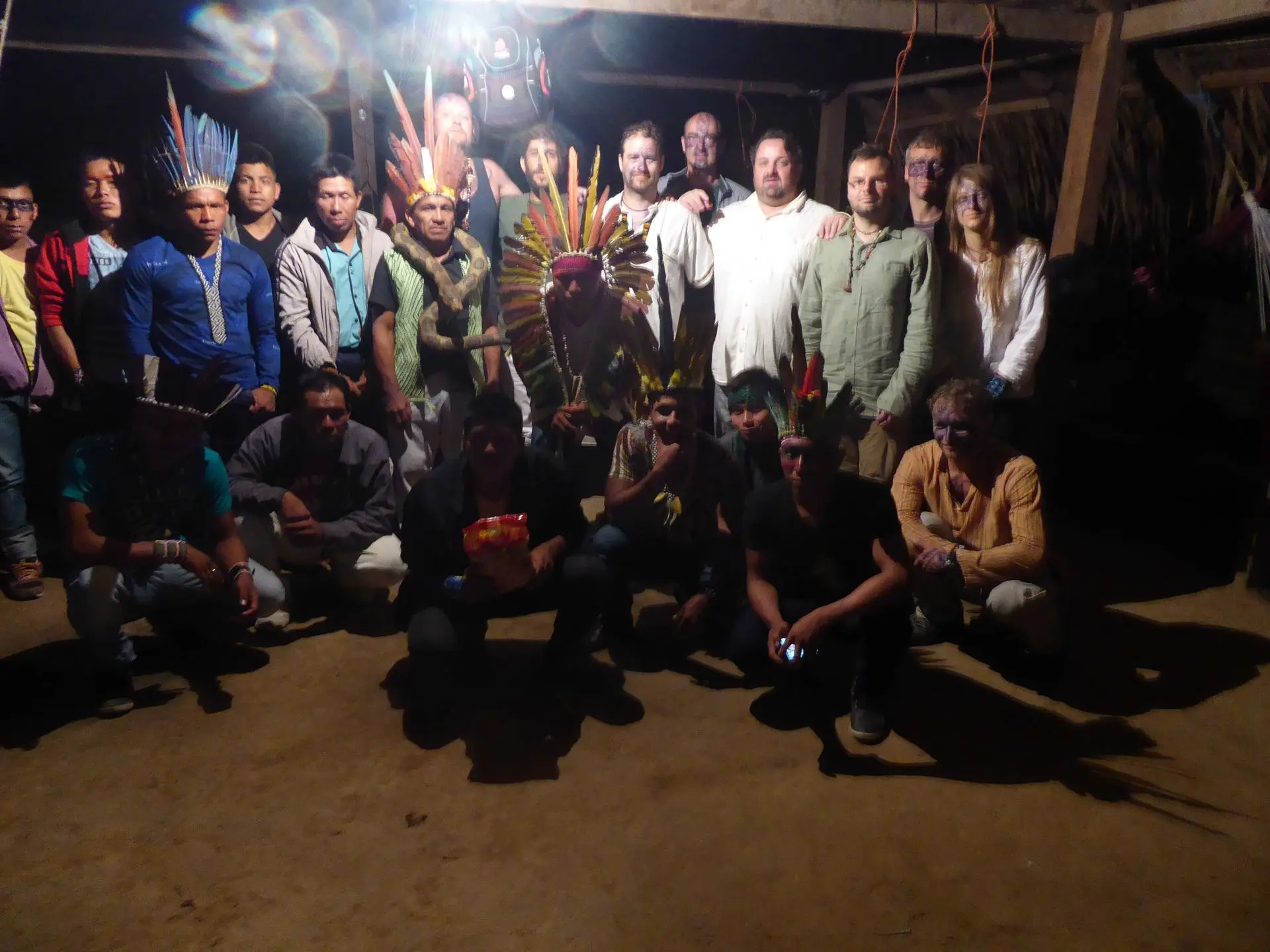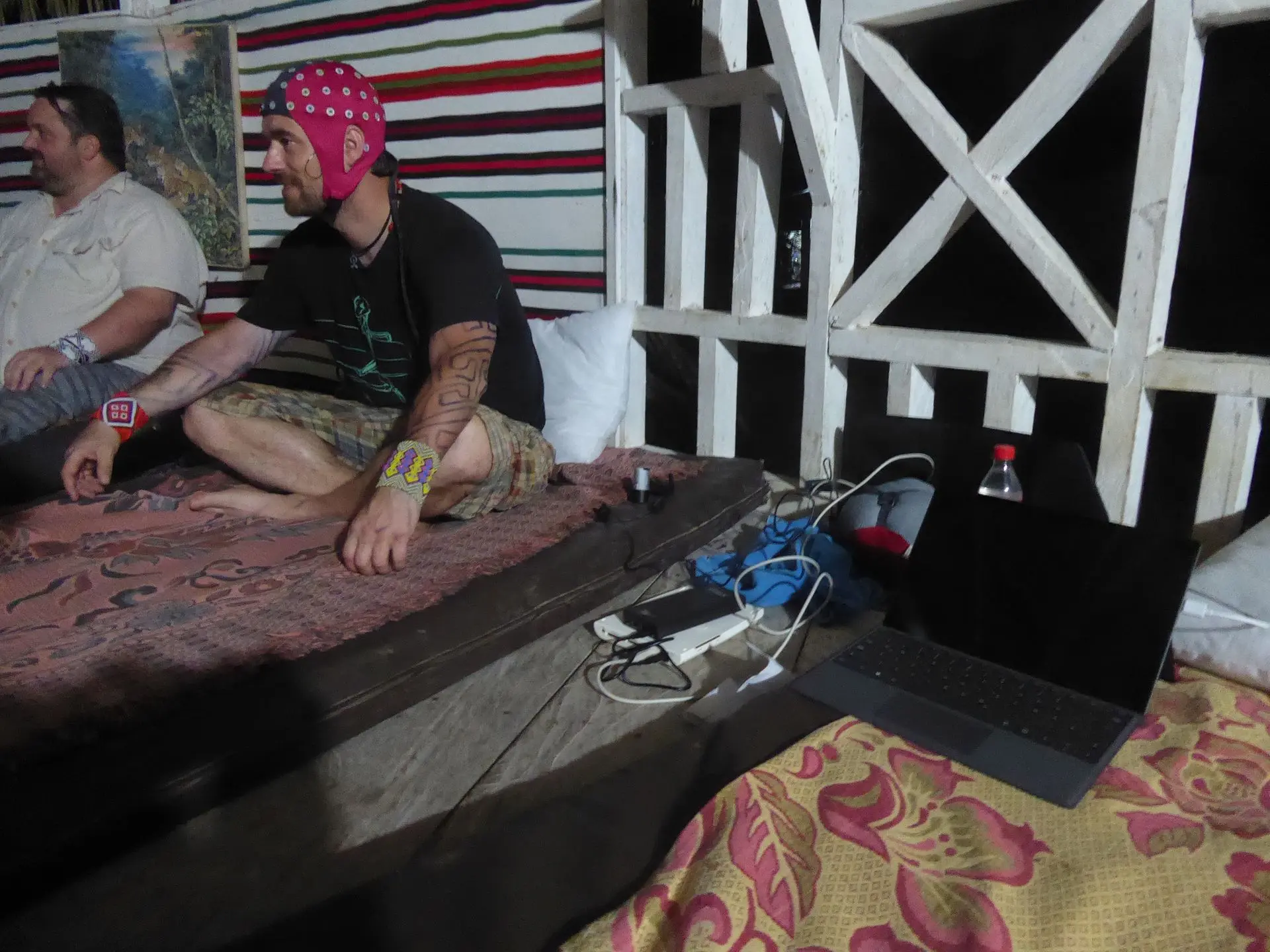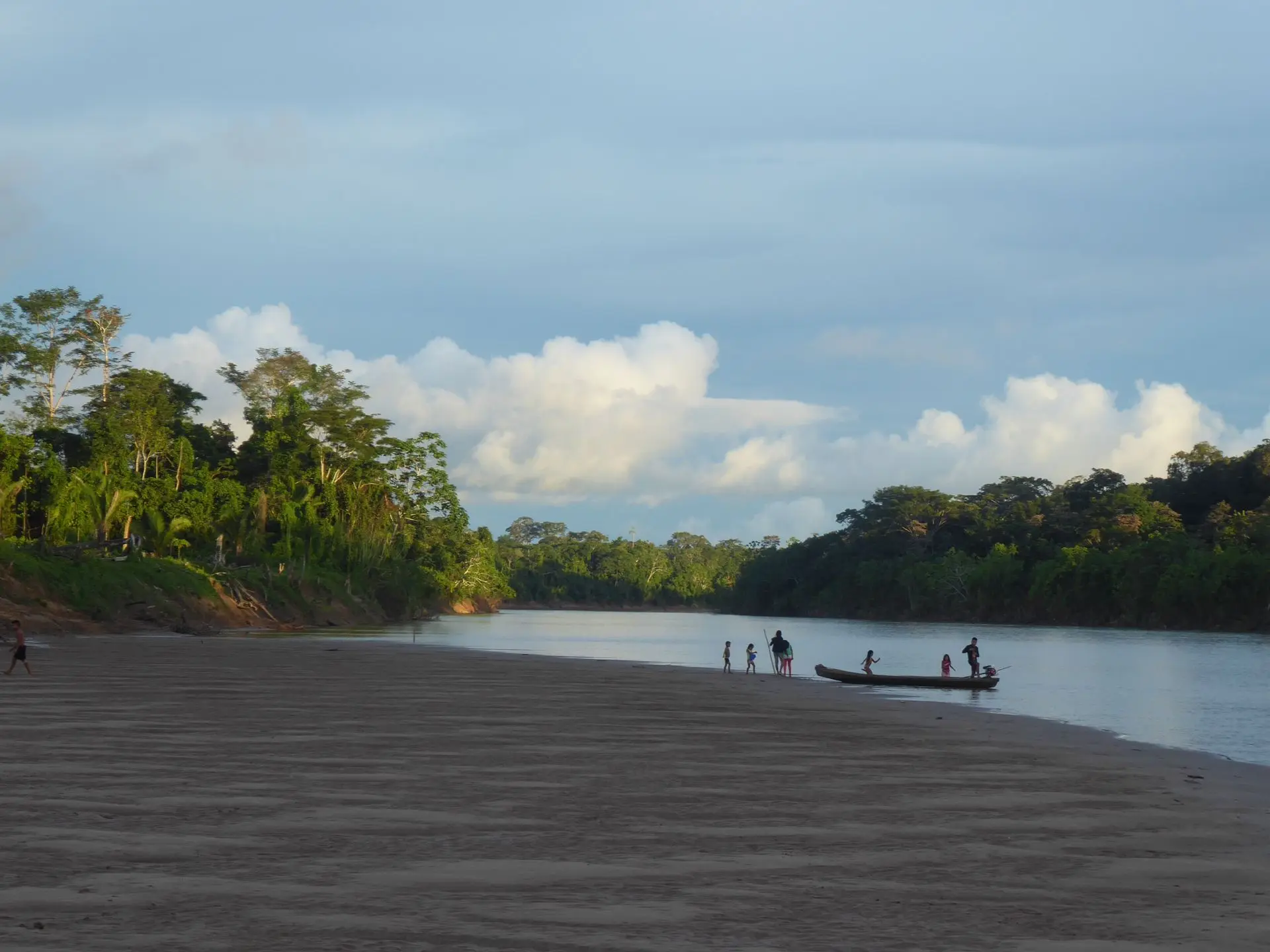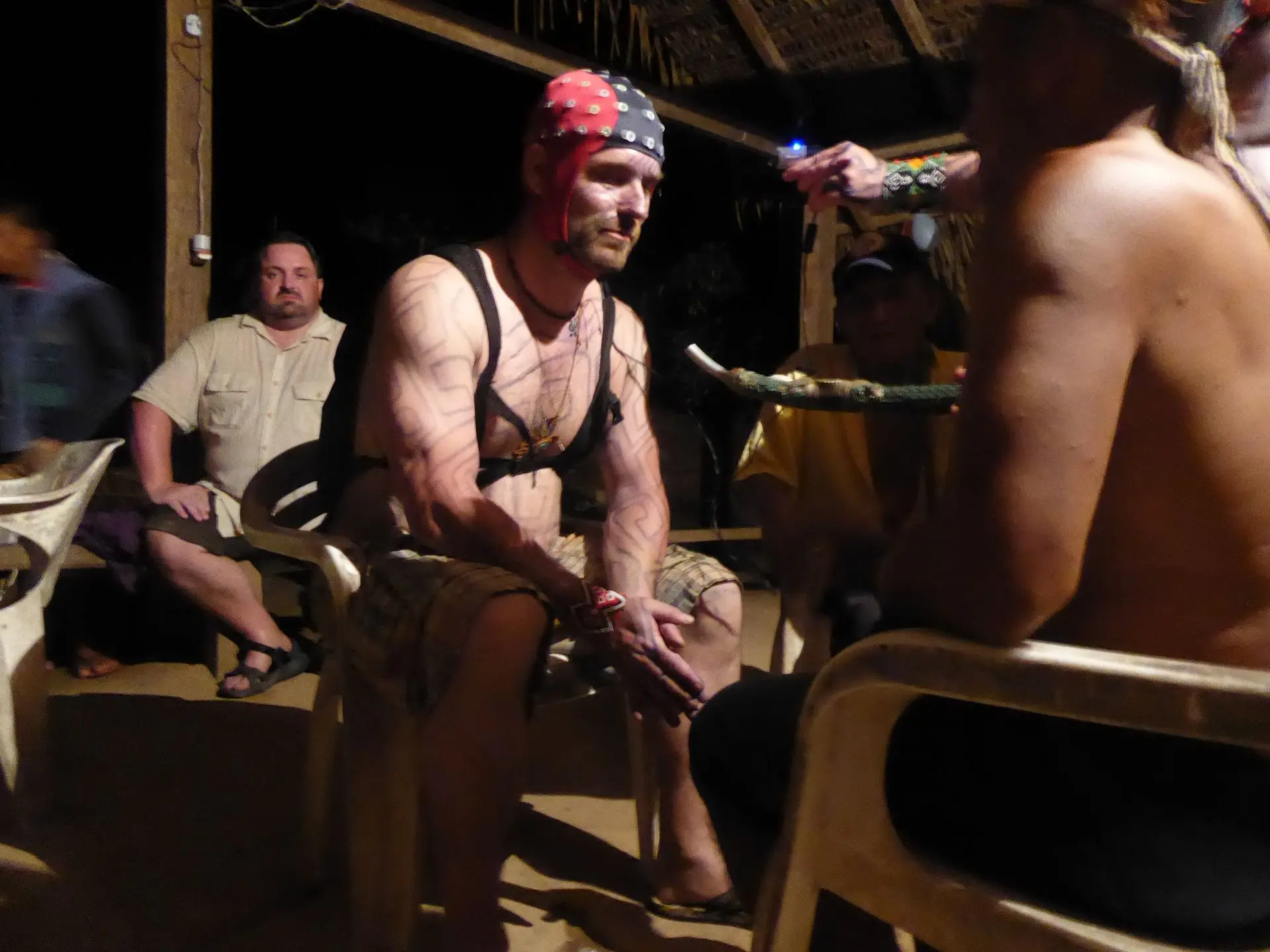This pilot expedition and mobile EEG study allowed us to pursue a larger trial for understanding the fundamental effect of Ayahuasca during ritual use, with great implications for the scientific understanding of indigenous knowledge and healing practices.
Eduardo Schenberg
For more than ten years I treaded a solid academic trajectory in the interface between psychology, neuroscience and psychiatry. I currently work as consultant in many different projects to help develop new psychiatric treatments using psychedelics. During my undergrad, Masters and PhD studies and post-doctoral research, I specialized in psychoactive substances, studying their most varied effects - harmful as well as therapeutic - focusing on psychedelic substances (ayahuasca, LSD, ibogaine, MDMA and psilocybin, among others).
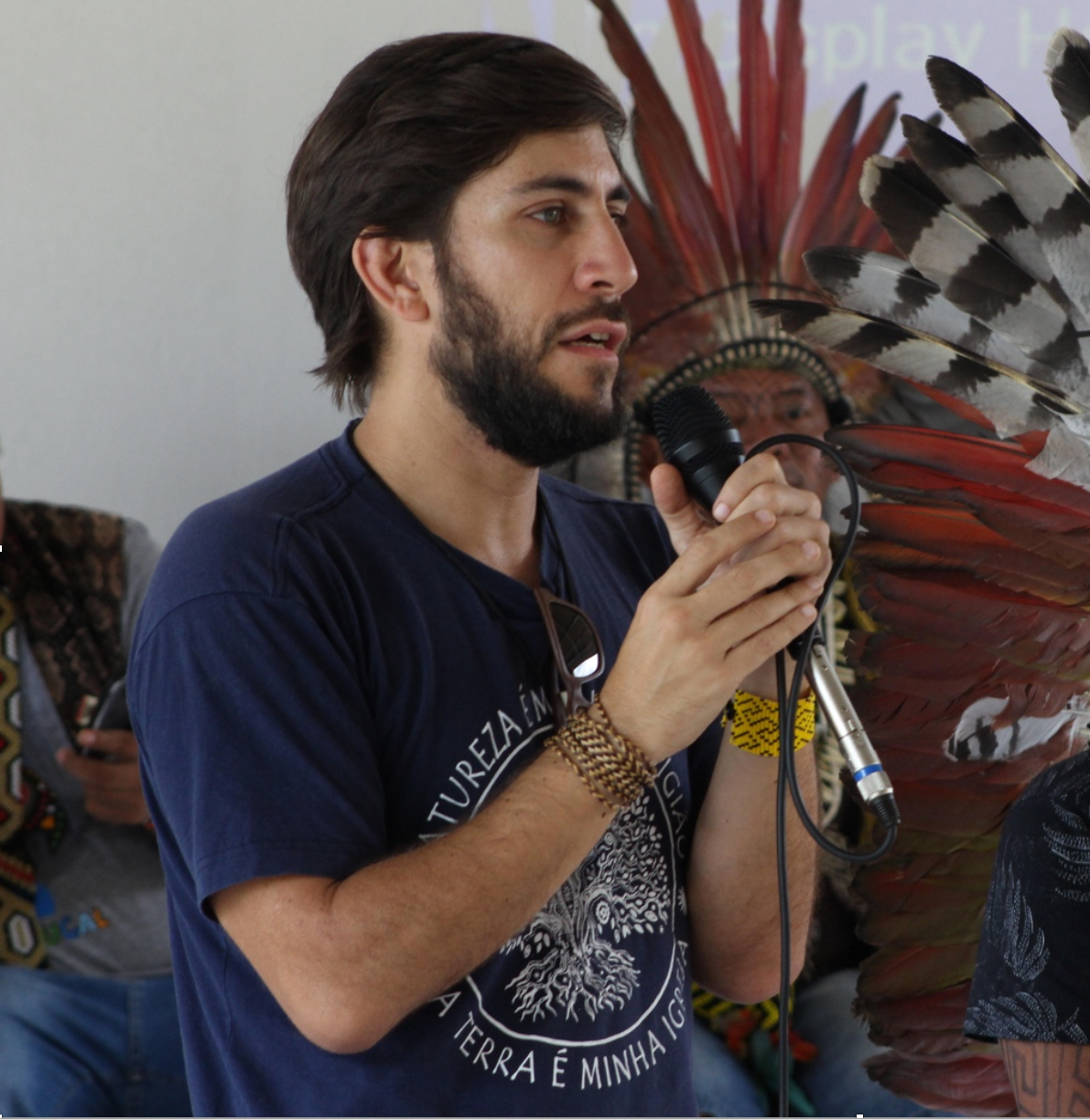
I led and participated in groundbreaking
research revealing the neural basis of psychedelic’s effects in the
human brain, helping to elucidate their effects in consciousness
and also their promising therapeutic potentials. I have professional
experiences with the first, second and third sectors (government,
business and non-profits). Creative and determined, I work to bring
radical and disruptive innovations in psychiatry, developing safer
and better treatments than currently available, focusing on severe
cases of drug addiction, depression and trauma, among others.
Eduardo Schenberg's website
Abstract
With an expert team of neuroscientists, we set off in April 2019 for an expedition into the Amazonian rainforest to run a pilot study into the effect of ceremonial Ayahuasca use with the Huni Kui tribe, who call the brew Nixi Pae. Travelling there by bus, boat and in small airplanes, we ultimately succeeded in getting a unique and first neuroscientific look into this fascinating ancient tribal tradition. This pilot expedition and mobile EEG study allowed us to pursue a larger trial for understanding the fundamental effect of Ayahuasca during ritual use, with great implications for the scientific understanding of indigenous knowledge and healing practices
Background
There is a rapidly growing interest in scientific research with psychedelic substances like LSD, MDMA, psilocybin (magic mushrooms), mescaline (peyote), and ayahuasca. The number of publications since 2000 has been rising sharply, especially because there is great therapeutic potential for depression, PTSD, end-of-life anxiety, alcoholism and drug dependence. Also, effects of these substances on brain networks are being studied as a way to advance one of the most challenging frontiers in neuroscience: consciousness and its relation to brain function.
Ayahuasca is a psychoactive brew from the Amazon basin, likely used by Amerindian peoples for more than a thousand years (Miller et al, 2019). It is known by many names in different local languages, including Nixi Pae in the Hãtxa Kui language of the Huni Kui indigenous people (also known as Kaxinawá), who live in the northwestern part of Brazil near the Bolivian and Peruvian border. Nixi pae is commonly used with ritual singing and praying and accompanied by other elaborated use of plants for healing and spiritual purposes. One of the most common forms of these is Rapé, a powder prepared from dried tobacco leaves, ash and other plants, blown into the nose using ceremonial wood pipes.
As worldwide interest in ayahuasca spiritual and religious uses grows, ayahuasca churches exist and other spiritual consumption forms are being practiced in more than 30 countries. Alongside, scientific interest has also been increasing: therapeutic effects as a fast-acting anti-depressant were recently reported in a double-blind controlled trial (Palhano-Fontes et al, 2019). It thus becomes more and more interesting to explore cultural origins and traditional patterns of the use of Ayahuasca. Even more importantly, we need to understand its effects on the central nervous system during the elicitation of an altered state of consciousness. In a traditional group ceremony of Amazonian people like the Huni Kui, the situation is strikingly different from usual isolated lab-environment with air conditioning, Faraday cages and surrounding equipment – most neuroscientific research about ayahuasca to date has been carried out in laboratories.
Scientific studies commenced in the 1990’s in Brazil and in 2002 the first EEG study (Riba et al, 2002) showed varied effects including alpha reductions, which later would be confirmed to be the hallmark signature of psychedelic drugs’ actions in the human brain, especially in the occipital pole. These alpha power reductions are the neural correlates of visions with eyes closed, which makes psychedelics quite famous drugs. Yet, there is much more to their effects in emotion, cognition, altered sensory processing, changes in perception of self and other effects yet to be explored. In the case of ayahuasca, in my post-doc project we investigated the complexity of this pharmacological brew containing at least four active principles, which in combination change brain waves in distinct patterns over time (Schenberg et al, 2015).
A most challenging aspect of this scientific research is the reductionistic approach. It may seem natural to scientists to standardize procedures, to calculate doses precisely in mg/kg, to control the study with placebo and to remove environmental factors that could be interpreted as interference such as music, singing, dancing, group interactions and the use of additional substances, e.g. rapé. Scientists have in the past even excluded data from subjects who vomit, even though vomiting is a common and maybe even a desired reaction after drinking ayahuasca, not necessarily interpreted in any negative connotation by their original users. Yet, the more standardization we introduce the less we resemble what is in these traditional ayahuasca rituals practiced by the Huni Kui: they sing, blow rapé, enjoy it in a group of friends and family in their natural setting - the forest. They have extra cups in one night and interpret everything as connected and part of their sacred healing and spiritual connections with the energies, life, creatures and spirits of the forest (which they call yuxin). They actively engage in the ceremony including the laborious preparation of the brew and typically have extensive experience from years of practice.
Aim of the expedition
The main objective of this explorative trip was to investigate the feasibility of a largescale EEG field study in the extreme heat and moisture conditions of the Amazon, bringing together the Huni Kui expertise in Nixi pae and neuroscientist’s knowledge about psychedelics. The experimental work literally happened in the green: practically no electricity, no closed rooms and no separation from other influences as usual in the ceremony. All this in the attempt to gain insights into the many possible interactions of ayahuasca, brain networks and the delicate and elaborate rituals, all mixed with the ongoing beautiful sound of the rainforest.
For that purpose, we spent two weeks in the Amazon region in April 2019. Traveling in this territory is complicated, time-consuming and full of surprises. Buses on poorly maintained roads, small boats and airplanes were used in different parts of the route starting in Rio Branco, Acre. Travel delays including a flight cancellation in Europe generated a cascade of problems later on. The expedition was organized with the support of the project from the Czech “Neuron foundation” entitled “Expedice Neuron” and further support by the PSYRES foundation and was headed by Dr. Tomáš Páleníček from NUDZ in Prague, Czech Republic. The team consisted of four medical doctors (psychiatrists and neurologists) and neuroscientists, a toxicologist, an EEG expert from ANT Neuro bv, and a media crew of three. I am a neuroscientist from Brazil and joined the group in Acre, working with the indigenous people in Brazil. The Huni Kui previously authorized the expedition, our participation in their ceremonies, our stay with them and audio and video recordings as part of the sessions, as well as the use of EEG, through the Federação do Povo Huni Kui do Acre or FEPHAC. The study was also approved by the ethics committee at NUDZ.
The expedition team subsequently continued to Peru visiting the Mayantuyacu treatment center for another round of ayahuasca and EEG sessions.
Figure 01: Subjects preparing for the rapé trial with high-density mobile EEG recordings.
Figure 02: Subject preparing for the rapé ingestion, blowing performed by Naxima, the expert and ceremonial leader.
Figure 03: Purus river scene.
Figure 04: Subject preparing for the ayahuasca ceremony in Mayantuyacu/Peru, the session lasting for three hours with the subject resting on a mattress.
Figure 05: Expedition and Huni Kui group photo.
Experimental setup for the EEG study
A mobile 64-channel EEG system (eego™mylab, ANT Neuro bv) was used to acquire the neurophysiological data. The EEG amplifier is battery-powered and was carried by the subject together with the recording tablet PC in a backpack or was placed on a chair. The EEG was recorded with full DC content (no high-pass filtering in hardware) and sampled at 1024 Hz. Impedances were checked to be lower than 20 kOhm before and after data acquisition. For short recordings of up to 20 minutes, subjects were in a sitting position on the ground or in a chair. For the three-hour ayahuasca recording, the subject laid down on a mattress.
64-channel EEG caps were used throughout all sessions (waveguard™original, ANT Neuro bv). These caps provide actively shielded electrodes in the extended 10-20 layout with sintered Ag/AgCl electrodes and a cap design that has been shown to permit recordings in extreme heat conditions (Périard et al, 2017) in combination with suitable electrolyte gel. EEG data were recorded with synchronized audio and video where appropriate.
Electrical interference with EEG was minimal due to the lack of line-powered sources of noise. Heat and humidity were expected to be a serious threat to the electronics. Our aof continuous operation, probably due to tight rain-proof packaging and consequentially overheating. The backup system worked reliably throughout all following sessions and was kept outside the backpack for a somewhat better ventilation.
Humidity and extreme heat of more than 37° Celsius pose a serious risk for malfunction of the electronic equipment and great care needs to be taken when packing and transporting in rainforest conditions. The EEG headcaps were washed after each session and worked extremely well. However, drying them is almost impossible without additional equipment such as a fan.
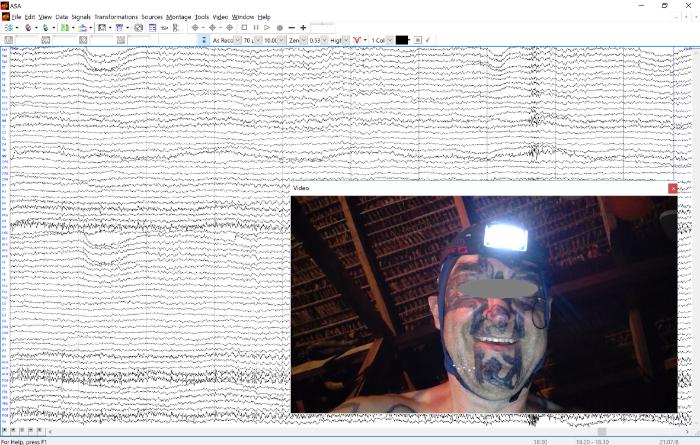
10 seconds of EEG (high-pass display filter at 0.53 Hz) shown with the subject after ingestion of rapé.
Preliminary analysis of the rapé sessions
Preliminary analysis (asa software, ANT Neuro bv) of a one-minute baseline epoch before intranasal rapé and a one-minute epoch 10 minutes after in one individual revealed very significant alpha frequency band power drops and Beta power increase, especially in the occipital region.
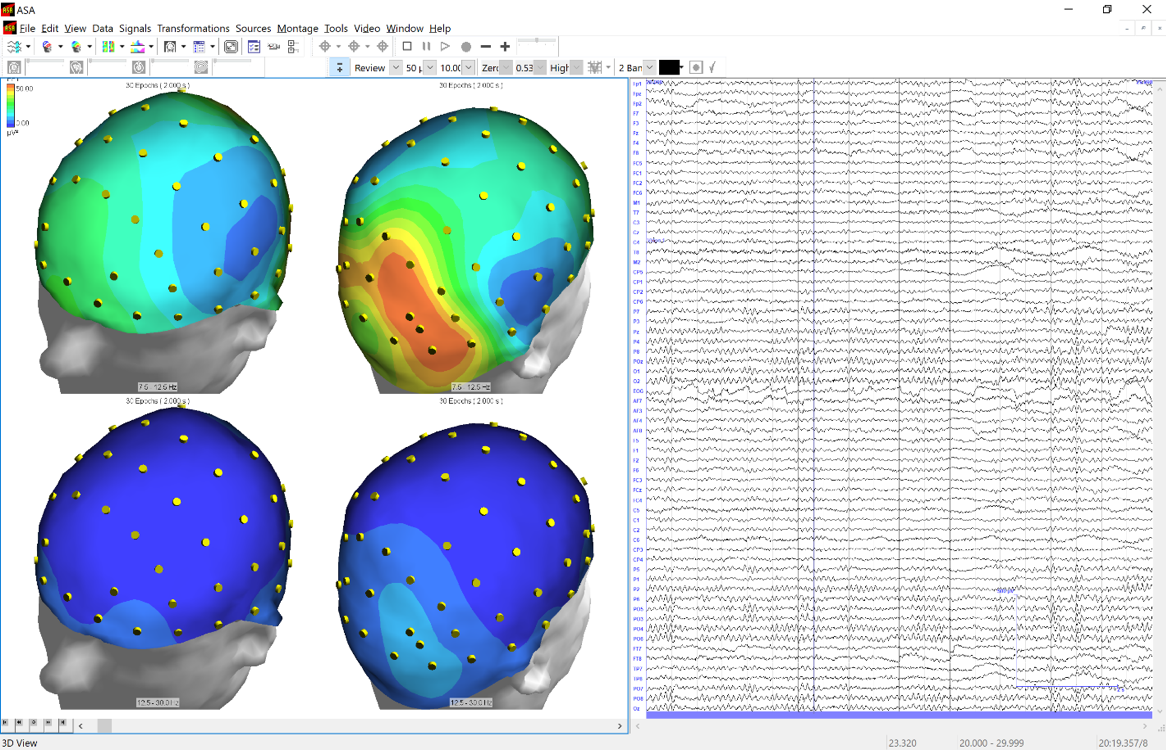
FFT-Mapping (left side) in Alpha (7.5 – 12.5 Hz, top row) and Beta (12.5 – 30.0 Hz, bottom row) frequency bands, calculated from 60 seconds of baseline EEG.
This result can be considered somewhat similar to the main effects of orally ingested classic psychedelics, including ayahuasca. Yet, rapé does not induce the typical visions with eyes closed, and thus it is intriguing to ponder the differences between rapé and classic psychedelics on the subjective effects while a potential similarity in occipital alpha reductions.

FFT-Mapping (left side) in Alpha (7.5 – 12.5 Hz, top row) and Beta (12.5 – 30.0 Hz, bottom row) frequency bands, calculated from 60 seconds of EEG ca 10 minutes after ingestion of rapé. Scaling and display settings of both the FFT view and the EEG view are identical to those in Figure above.
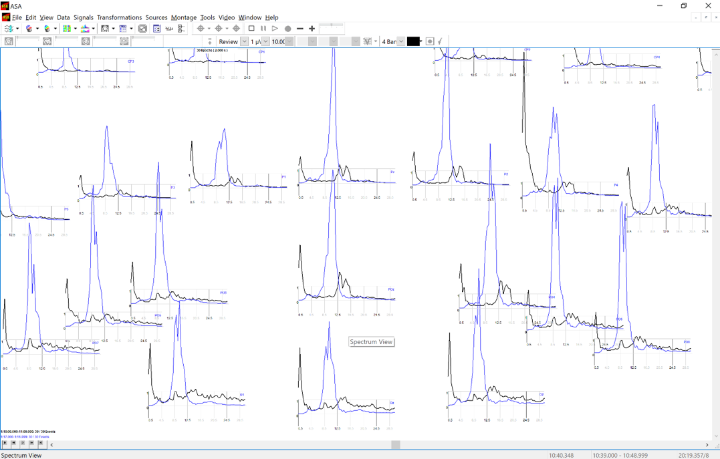
FFT power charts per electrode, zooming in on the occipital channels (bottom central is Oz electrode) and showing baseline (blue) versus rapé ingestion (black) condition. The drop in Alpha power is accompanied with an increase in Beta activity with a distinctive double peak at 13 and 15 Hz.
Preliminary analysis of the ayahuasca sessions
The subject reported his subjective impressions after having one cup of ayahuasca as follows: “Initially, I had a few minutes eyes open, then the visions started very quickly, within 30 min. I had a moment where I was really overwhelmed with many images and thoughts and then it came to me that this is how psychotics people must feel (about 15 min), not being able to focus on anything, images of faces, plants and memories ... Then it moved more towards fractal plant and animal-like images, but nothing strong.”
Analysis in frequency domain (asa software, ANT Neuro bv, ant-neuro.com) was carried out in one-minute epochs of the resting-state EEG. The following images give an impression of the rapid changes in the Alpha and Beta bands. Detailed and more sophisticated analysis is currently ongoing.
Each image shows one minute of EEG to the left (31 channels, 10-20 positions), high-pass filtered at 1 Hz and in common average montage, with 50 µV sensitivity, and FFT power per channel for the same EEG to the right, with the frequency axis going from 0.5 to 30 Hz and coloring per band (Delta in red, Theta in orange, Alpha in yellow, Beta in green), power sensitivity 1µV². The images were taken from minute 12, 22, 33, 43, 53, 63, 73, 83, 93 and 103 after intake of the substance. No other substances were used and the subject lied on the mattress, listening to the ritual singing by the maestro.
We observed a strong reduction in Alpha (peaking at 10 – 11 Hz) followed by a gradual shift in peak resting-state frequency into the Beta range at 13 Hz (minute 53). The effect reversed but with Alpha activity being at a higher peak frequency and more frontally present than originally (minute 103).
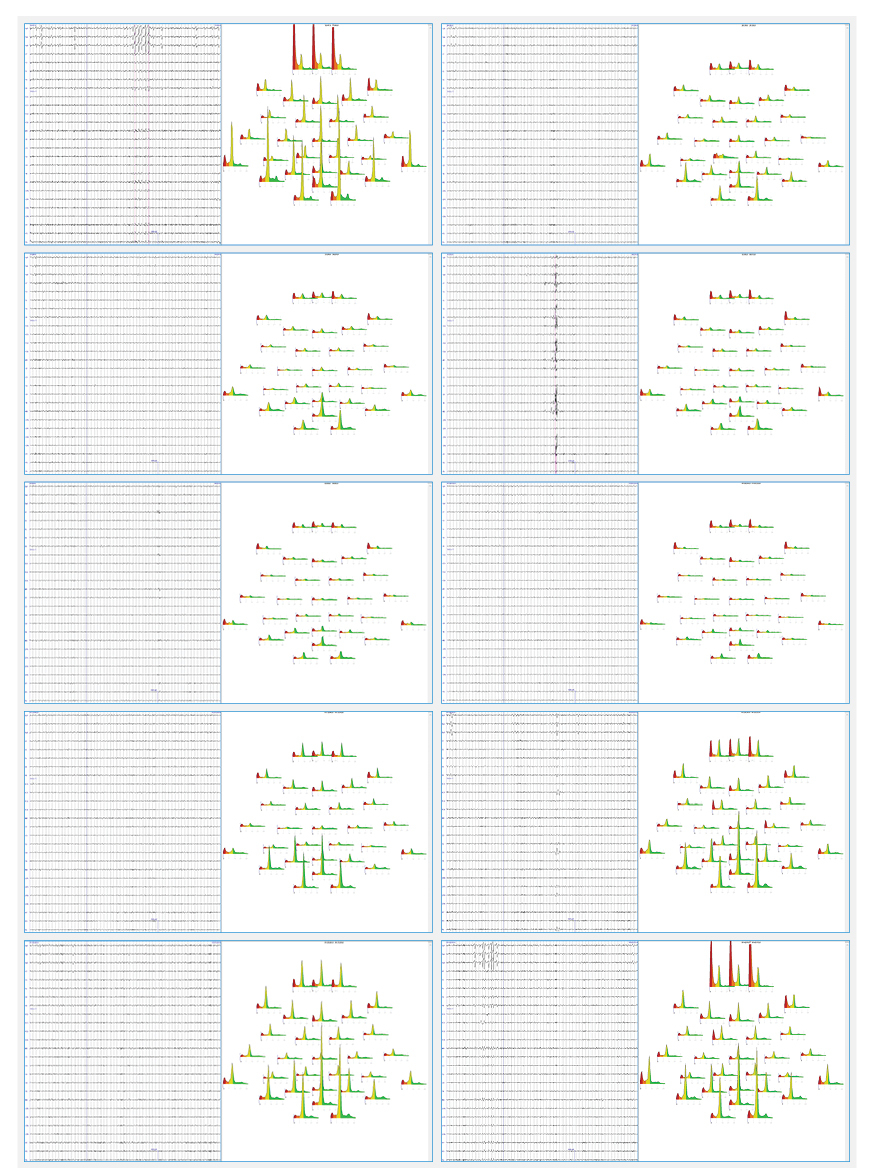
Conclusions and Outlook
We were able to establish a good relationship with the Huni Kui people, to participate in their healing rituals and do preliminary EEG recordings on ourselves before and after having intranasal rapé and also after ingesting ayahuasca. In a context like this it is very hard to design and implement blinding with a placebo substance, which is considered the gold-standard in pharmacological studies. Yet, the striking subjective effects of both ayahuasca and rapé makes blinding very likely to be broken during the study, even in laboratory settings, which is why the repeated measures design as planned by us is a useful alternative. We recorded each individual during a baseline and then during/after the blowing of rapé or ingesting ayahuasca, in different situations. Data quality was very good, with minimal movement artifacts after a rapé blow or when the subject changed position.
In this first short and exploratory expedition, we confirmed that there is mutual interest from scientists and members from a traditional indigenous culture of the amazon to jointly explore the nature of consciousness and how their traditional healing works, including - for the first time ever - recordings of brain activity in a scenario many would consider technically too challenging. At a time when the Amazon is endangered by deforestation, indigenous cultures politically threatened and scientists witnessing a so-called “psychedelic renaissance”, we consider it of supreme value to jointly investigate how the Huni Kui rituals and medicines affect human cognition, emotions and group bonding, and to analyze the neural basis of these altered states of consciousness, possibly including mystical experiences in the forest.
One of the most interesting and challenging goals in the upcoming expedition will be to perform simultaneous EEG hyper-scanning of up to seven people ingesting Nixi Pae in the forest and measure inter-brain synchrony. Interpreted as a kind of gateway to the spiritual world by the Huni Kui and other amerindian peoples, ayahuasca is known to strongly and quickly strengthen community bonding and feelings of empathy or closeness to others. It thus remains a very intriguing possibility that there is increased inter-brain synchronization while the participants and the maestro (or shaman, or guide) jointly experience an altered state of consciousness mediated in great part by ancestral songs. In such extreme conditions, mobile EEG has been proven to be a great tool for studying the human brain and we are confident to be able to collect high-quality data in the next phase of this project.
About the Huni Kui
The Huni Kui tribe belongs to the Pano linguistic family that inhabits the tropical forest of eastern Peru, from the Andean foothills to the Brazilian border, and in Western Brazilian states of Acre and Amazonas, along the Purus, Curanja, Tarauacá, Jordão, Breu, Muru, Envira and Humaitá rivers. Contact with colonizers started in the 18th and intensified in the 19th century during rubber tapping explorations. In 1913, the Juruá region achieved the expressive mark of 40.000 migrants and Purus 60.000 in a very violent period. Today the Huni Kui live in 12 demarcated indigenous territories in 104 aldeias (villages) in five different municipalities, with a population around 13.000 people.
According to the Huni Kui own understanding, their history has four main epochs or stages: first there “time of maloca” when they lived their own way before contact with colonizers; the “time of contact” when “correrias” (running away) started; followed by the “age of rights” when they fought for freedom, cultural liberty and official recognition of their lands. Currently they live a “new age” of strengthening their culture, learning to adequately use technology and settling their own schools to teach and preserve their language, the Hãtxa kui.
Huni Kui claim that the old shamans do not exist anymore, but some still know how to communicate with yuxin (soul or spirits, for lack of more precise translations), and they live a resurgence of interest in their Nixi pae (ayahuasca) rituals together with their Huni Meka, or chants of the Nixi pae.
Differently from other people for whom ayahuasca is used only by “shamans”, for the Huni Kui it is a group practice shared by most men and boys to “see the world of the vine” and understand that the yuxin, or spiritual world, permeates all the living phenomena on earth, water and in the sky.
References

Rapid antidepressant effects of the psychedelic ayahuasca in treatment-resistant depression: a randomized placebo-controlled trial
by Palhano-Fontes et al, 2019
Read More

Cerebrocortical activity during self-paced exercise in temperate, hot and hypoxic conditions
by Périard et al, 2017
Read More

Chemical evidence for the use of multiple psychotropic plants in a 1,000-year-old ritual bundle from South America
by Miller et al, 2019
Read More

